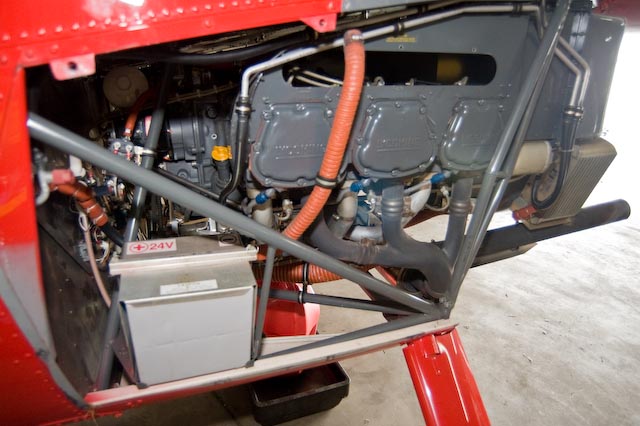

In this picture you can see that the engine layout is very similar to that of the R22. You can see the battery (24 volt in this case) and similar routing for intake, exhaust, etc. Of course, the R44 has a six cylinder IO540 (O540 in the case of the Raven I) instead of the 4 cylinder O320 and O360 of the R22.
Towards the left top of the photograph you can see the oil filter at the top of the engine. Some of the engine sheet metal has been removed to gain access to the upper spark plugs.
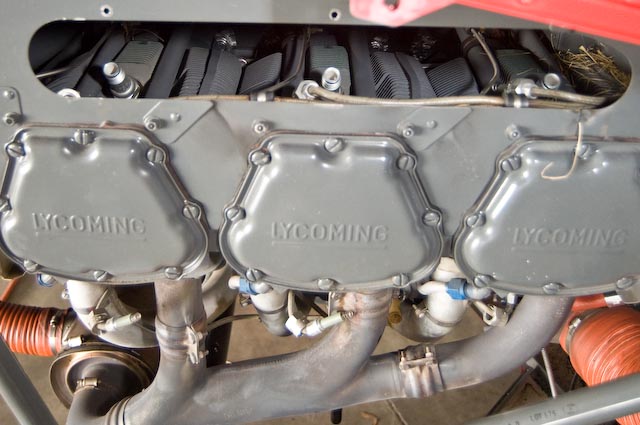
In this close up you can see the three upper spark plugs - the wires have already been removed in preparation for replacing the plugs as part of the 100 hour inspection. The lower plug wires are off as well, if you look carefully. You can see the cooling fins of the cylinder heads. Looking below the valve covers, the tubes with the blue fitting on them are the oil return lines for the cylinder heads. The light colored tube just beneath them leading to the cylinder heads is the induction air leading to the intake valve.
You can also see the exhaust pipes collecting together and joining the muffler. The big orange hose is part of the cabin heating system. The cooling fan blows cool air through a big orange tube, it enters the space between the muffler and the muffler shroud, flows across the muffler, and then into another orange hose which leads up to the cabin. Later model R44s have a carbon monoxide detection system in case the muffler was pinholed and allowed exhaust gas to mix with the cabin air.
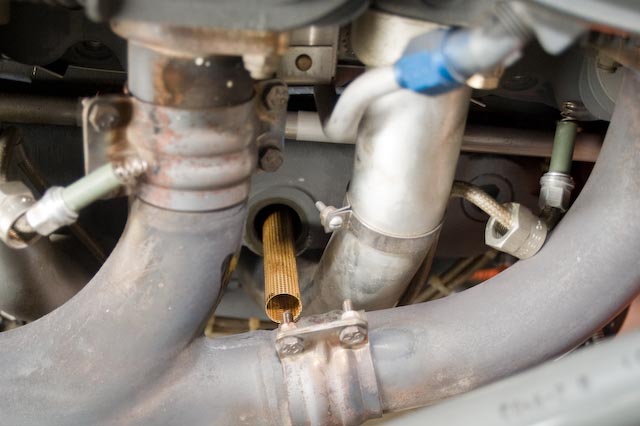
On the right side you can see the oil screen. This is a fine mesh of (brass?) which filters large chunks out of the oil. On many aircraft engines (including the R22's O320) there is no oil filter, just the screen. Obviously an oil filter will do a better job of removing contaminents from the oil.
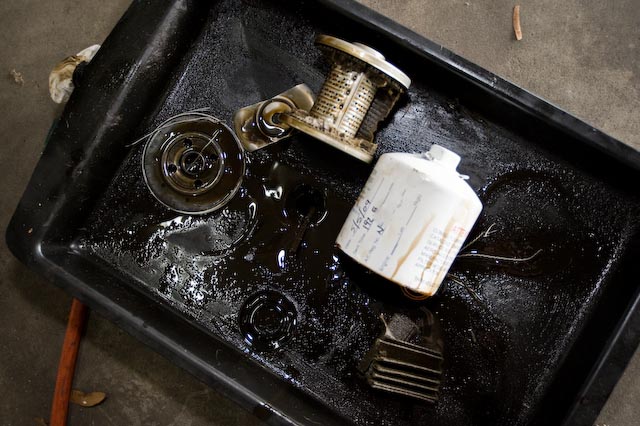
To check whether there are foreign objects or metal particles in the oil filter, most mechanics will cut it open during an inspection.
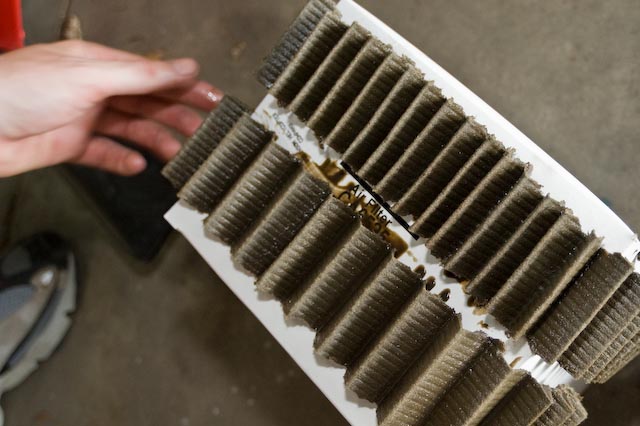
Inspecting the filter element for fine metal particles may tell you whether you have a component such as a bearing breaking down inside the engine. We also send a sample of the oil out, and it is analyzed for metal, again to tell you whether some component of the engine is experiencing excessive wear.
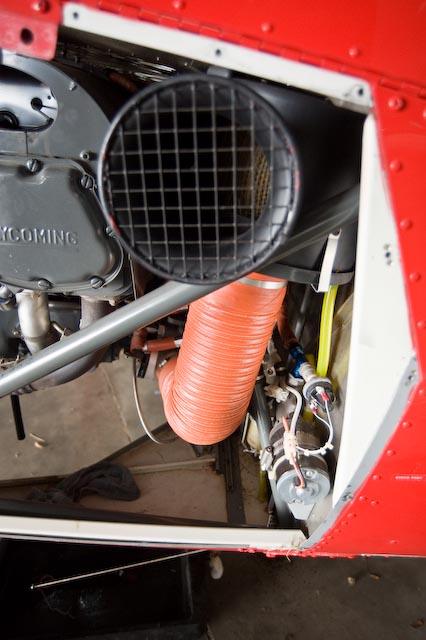
You can see the air inlet in this photograph. If you look carefully inside the screen, you can see part of the air filter element. The air goes through the filter, and then through the orange hose to the intake mechanism.
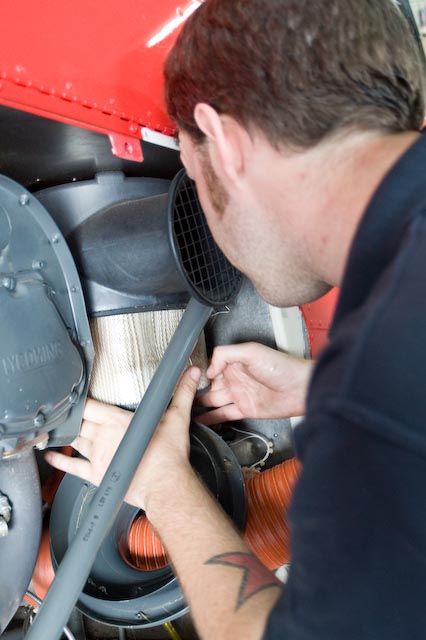
Here the mechanic doing the inspection is removing the old filter element.
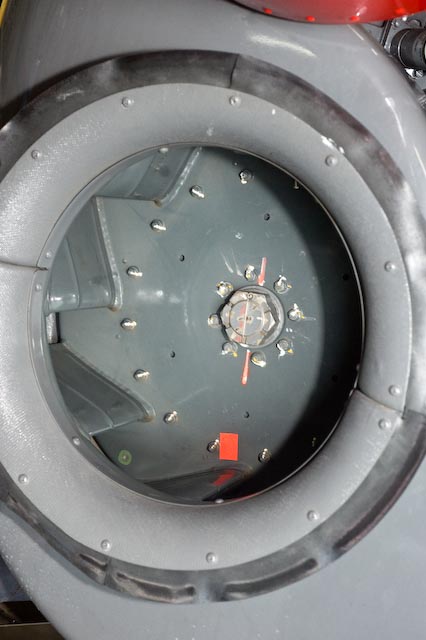
The R44 fan looks just like an R22 fan, only bigger. Note the orange stripe aligned with the pin through the prop shaft. If it is misaligned, it's usually an indication that someone oversped the engine (typically by starting with the throttle open) and spun the fan on the shaft. The orange square is a balance weight added at the factory to reduce vibration from the fan.
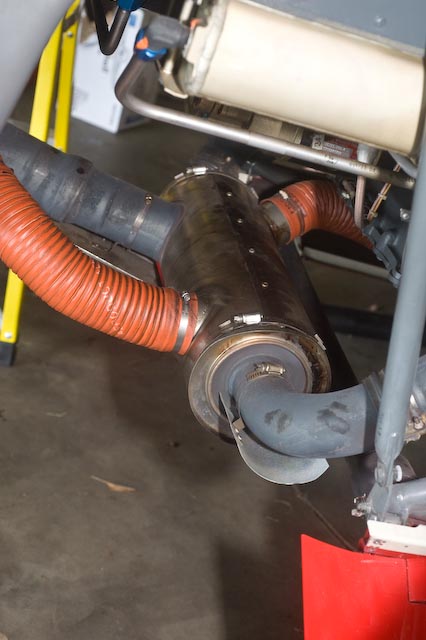
Here you can see the muffler with both orange hoses. The near one is coming from the fan, where air is being forced towards the muffler. It flows across the muffler, and then out the far orange hose to the cabin heat duct. The tan/gold object in the top foreground is one of the two oil coolers. The close oil line is going to the front of the engine, the other one which you can just see at the top of the photo is going to the other oil cooler - the R44 has two interconnected oil coolers. The fan blows cool air down through each one in order to cool the oil.
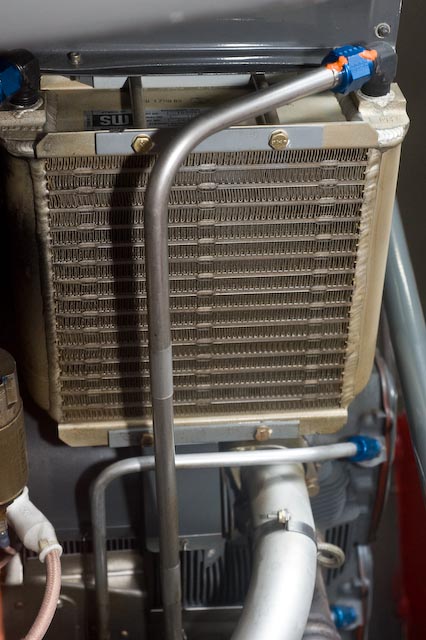
Here you can see the cooler more clearly. The main tube we are seeing leads off to the front of the engine. The top left blue fitting which is just barely visible is the tube that leads to the other oil cooler.
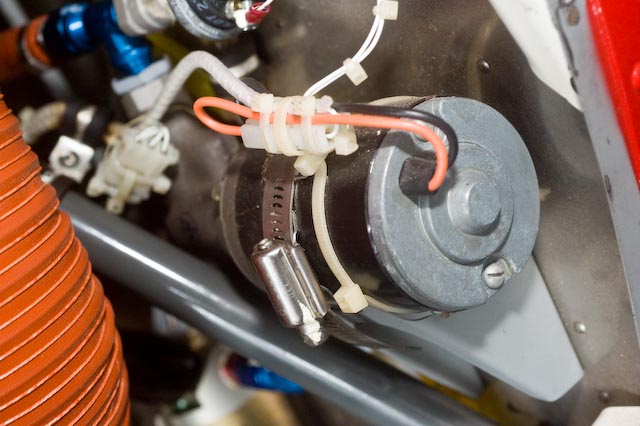
Detail of the auxiliary fuel pump. The Raven II being fuel injected requires a fuel pump. There are actually two: there is an engine driven fuel pump, and this electrically driven fuel pump. This one is turned on when you engage the clutch switch, or turn the key switch to the "prime" position. There is a pressure transducer which will detect low pressure from this pump and light the "aux fuel pump" warning light. The engine will run on either pump. If they both fail the engine would stall. If the engine driven pump failed, you would probably figure it out during shutdown - when you disengaged the clutch and the electric pump stopped working, the engine would quit if the engine driven pump was also not working.
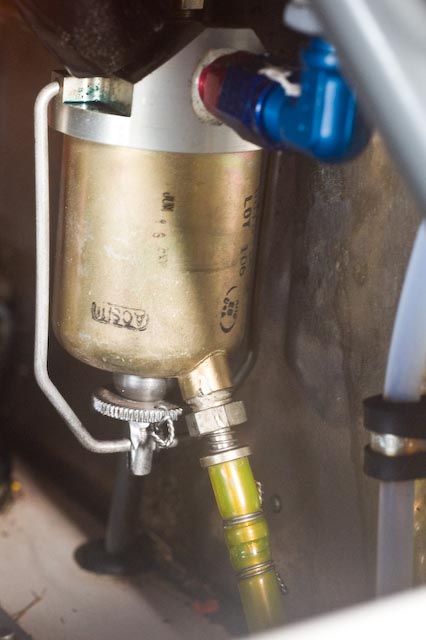
The gascolator separates water and contaminents from the fuel. The yellow hose on the bottom connects to the little aluminium tube that we push up to sample fuel from the gascolator during preflight. The blue fitting on top is a fuel line.
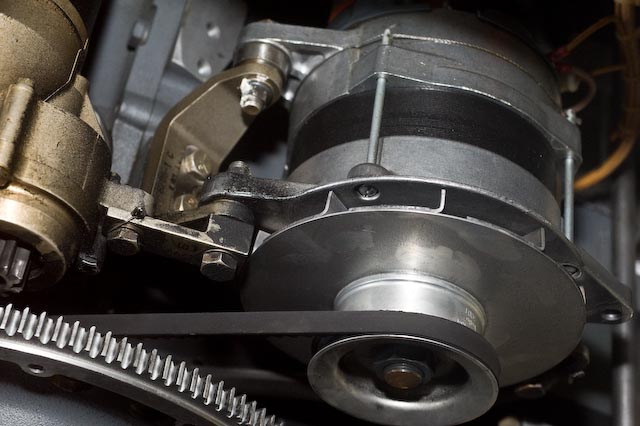
The alternator is driven by a v-belt. It supplies power to the bus to run the electrical equipment as well as to recharge the battery. This particular helicopter has a 28 volt alternator.
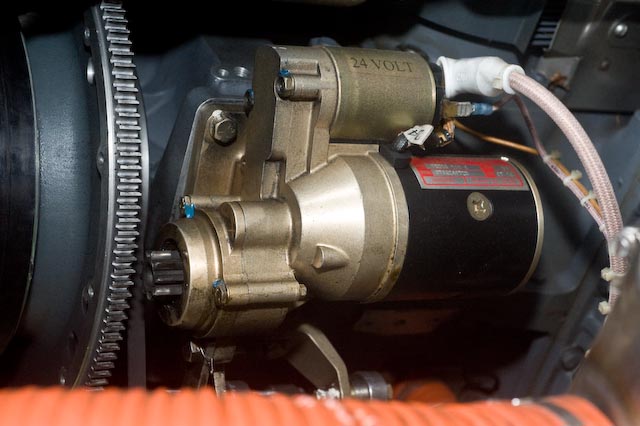
This photograph shows the starter motor. The black part is the actual motor, while the upper brass colored cylinder with the white electrical terminal is the solonoid. The purpose of the starter solinoid is to push the small gear on the starter motor to engage the teeth on the flywheel. When you turn the key, the small gear is driven to the left on a shaft. When the engine starts running, the solinoid should retract the shaft. There is a "starter on" light on the instrument panel to warn you if the shaft does not retract.
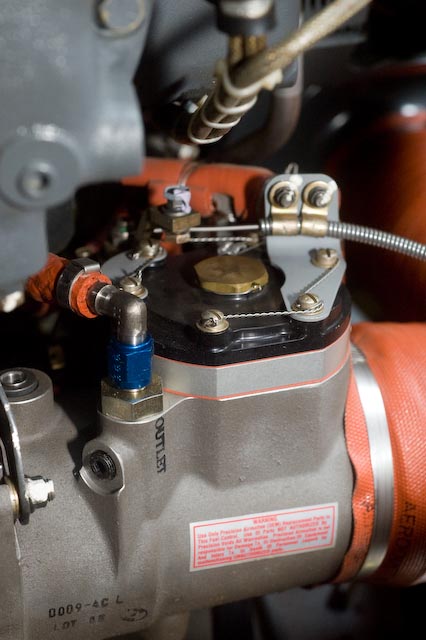
The fuel controller is unique to the fuel injected Raven II. On the Astro and Raven I you would have a carburetor instead. The cable in the center of the picture is the mixture control cable. The orange hose on the lower right is coming from the air filter.
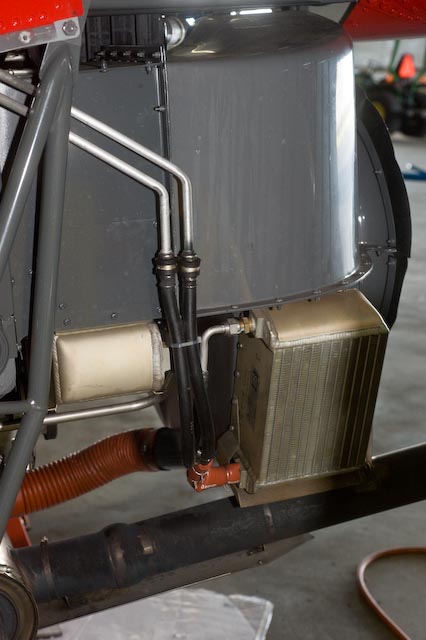
Although this looks like another oil cooler, it's actually the air conditioner condenser coil. The air conditioner in the Raven II feels pretty much like one in a car. It can't keep the cabin cool on a hot day when the sun is streaming in through all that plastic, but it is quite effective, and comes on almost immediately after starting the engine.